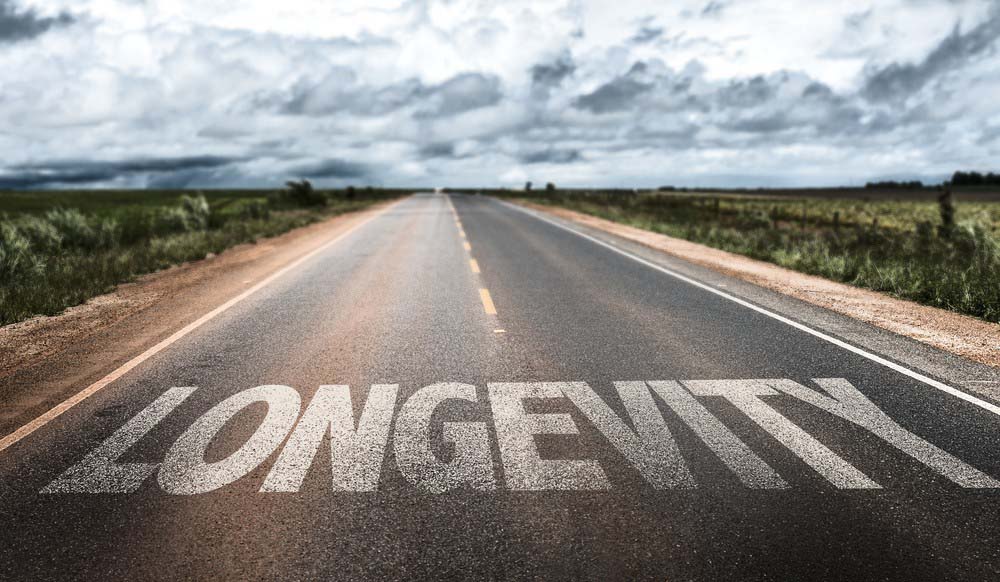A profound and eager hopefulness infects a medical device start-up staff. “No obstacle will be too big to conquer,” is heard during the weekly status meeting. The cold, hard, veiled fact is it is true for only a small group of funded start-ups. Let’s look at some numbers, set expectations, learn from successes, and search for opportunities.

Did you know that the W.H.O. has projected that between the years 2015 to 2050 the number of people in the world age 60 and over will nearly double from 12% to 22% and is expected to total 2 billion? Human beings are living longer now. That is, in part, because of the flood of medical breakthroughs being realized in the early 21st century.
Those torrents of medical breakthroughs are being realized due to the efforts and creative vision of medical device startup companies. The medical device startup industry will shape the medical innovations that will benefit humanity for decades to come.
On a global scale, the medical device startup industry is estimated to be worth almost $613 billion by the year 2025. However, medical device startup success is never guaranteed.

In the San Francisco Bay Area here in California, typically only 10 out of 100 medical startup companies survive the presentation, funding proposal, and vetting process before launch. Five of those will fail and three will break even.
Thus, only two out of those 10 startups will become successful and profitable.
If your medical device startup needs help with literature searching, fundraising, clinical evaluations, or clinical investigation design, contact Global Strategic Solutions now.
With that in mind, here is a list of three medical device startups you should be paying attention to.
RELATED – Mythical Medical and the Priceless Napkin: Sharing PMS information is a healthy behavior
ABLE Human Motion
About 5.4 million Americans are living with various forms of paralysis, especially lower-limb paralysis. Depending on the severity of paralysis, there are no medically recuperative options. Most people living with lower-limb paralysis live out their lives confined to using orthopedic braces, crutches, and wheelchairs.
A new medical device startup based in Barcelona, Spain called ABLE Human Motion is determined to change that reality.
ABLE’s Robotic Exoskeleton
 ABLE Human Motion is perfecting an exoskeleton prosthesis designed to help people with spinal cord injuries and lower limb paralysis walk again.
ABLE Human Motion is perfecting an exoskeleton prosthesis designed to help people with spinal cord injuries and lower limb paralysis walk again.
ABLE’s medical startup mission or goal is to help people with paralyzing disabilities live better and to enhance the quality of their lives.
The most notable fact about ABLE Human Motion is that the company went from exoskeleton prosthesis conceptualization to a working prototype within 3 years.
ABLE’s Exoskeleton Facts
 In the figure, from ABLE’s website, Birgit Skarstein (Norwegian Paralympic athlete) is using the ABLE exoskeleton. ABLE’s exoskeleton is extremely lightweight. It only weighs about 17.6 pounds.
In the figure, from ABLE’s website, Birgit Skarstein (Norwegian Paralympic athlete) is using the ABLE exoskeleton. ABLE’s exoskeleton is extremely lightweight. It only weighs about 17.6 pounds.
The exoskeleton was conceptualized by the intense study of human gait while walking. This data was then used to program the operational parameters of the exoskeleton. ABLE’s exoskeleton can even detect and remember the gait of its users to provide a more customized mobility experience.
ABLE Human Motion Fundraising
ABLE has raised over $913,000 in seed capital fundraising over the last 2 years.
The ABLE Human Motion exoskeleton is currently undergoing clinical evaluation in the European Union. A clinical trial is being performed at Heidelberg University Hospital (Germany) and Institut Guttmann Neurorehabilitation Hospital (Spain).
This medical device is not yet CE approved (European Conformity). That means it hasn’t gained the European equivalent of either the US FDA clearance (510k) or US FDA approval (PMA).
RELATED – What Is The Difference Between Clinical Evaluation and Clinical Investigation?
Parasym Health
Chronic pain sufferers experience intense, non-ceasing feelings of pain for days, weeks, months, and sometimes a lifetime.

Fibromyalgia, spinal cord injuries, and chronic migraines with aura are examples of chronic pain.
20% of Americans experience chronic pain every day. Less than 60% experience alleviation from medication.
Parasym, a London-based medical startup, is innovating neurostimulation technology to help people suffering from chronic pain.
Parasym Transcutaneous Vagus Nerve Stimulation Device
The Parasym Transcutaneous Vagus Nerve Stimulation Device is an innovative, non-invasive neurostimulation technology designed to alleviate chronic pain. This device emits micro-pulses of electric current to the vagus nerve via an electrode that fits comfortably on the earlobe. Promising clinical trials have shown that Parasym’s device has offered therapeutic relief to chronic pain sufferers.
The Vagus Nerve
The vagus nerve is a long nerve that extends from the cranium and down to the lower torso. You have two vagus nerves on both sides of your head. Additionally, the vagus nerve connects the brain with the head, neck, torso, and colon. The designers of the Parasym medical device believe that electric neurostimulation of the vagus nerve may help modulate pain signals throughout the body.
Parasym Launch Progress
There is no publicly available information about Parasym’s fundraising as of yet. However, the Parasym Device has already been CE approved, which is the European Union equivalent of FDA clearance or approval. In the United States, the Parasym Device has been listed as a non-significant risk (NSR) device by the FDA. Additionally, the Parasym Device has been granted an investigational device exemption (IDE) for a research study in the United States. It may soon be available on the American commercial market.
Day Zero Diagnostics
Almost 3 million Americans get afflicted with antibiotic-resistant infections annually. And of that number, an estimated 35,000 die annually. How about globally? Roughly 700,000 people globally die of antibiotic-resistant infections annually.

Antimicrobial-resistant infections, whether viral or bacterial, are a grave concern to the medical community. Sepsis infections can cause death within 5 hours if not treated immediately or properly. Day Zero Diagnostics, a Boston-based medical startup, is using innovative genome sequencing technology to offer solutions.
Whole-Genome Sequencing Diagnostics
The Harvard-born startup is developing a sequencing-based and machine learning-powered diagnostic system that identifies, within hours, both the species and the antibiotic resistance profile of a bacterial pathogen. The system is designed to allow for the simultaneous testing of a broad range of bacterial species and their antibiotic susceptibility. If doctors recognize the infection species quicker, they can render aid quicker. The company has been recognized as a leading innovator by MedTech Innovator, TedMed Hive, Xconomy, HealthTech Arkansas, and MassChallenge HealthTech.

A prerequisite for the development of robust computational algorithms as being proposed by Day Zero Diagnostics is access to a large, high-quality, “big” dataset. Fortunately, they have invested in the creation of such a dataset, an asset that uniquely enables the development and validation of highly accurate genomic algorithms.
Day Zero Diagnostics Fundraising
Day Zero Diagnostics raised over $6.2 million in seed capital funding from a non-profit in early 2020. DZD will be eligible to receive an additional $18.7 million if the company’s technologies meet developmental milestones.
Acquire the Right Consulting Partner for Your Medical Device Startup
It’s inspiring to read about these successful medical device startup companies. However, it’s important to remember that these 3 successful companies are the exception to the rule. Remember – only 10-out-of-every-100 medical device startup companies survive the presentation, proposal, and funding stage. Only about two of those out of the original 10 that got “greenlighted” will go on to be profitable and successful.
If you run a medical device startup and want to succeed, make sure you partner with the right consulting firm – contact Global Strategic Solutions today.
Three Encouraging Final Thoughts

During your journey in the medical device startup world, I have three encouraging suggestions. First, identify and confirm the unmet medical need. Optimism is not data. The business value is real. So, have a clear idea of how the product will meet a real medical need. Second, seek out and listen carefully to regulators and notified bodies – if they want chocolate, quit trying to sell them vanilla. The clinical, regulatory, and quality pathway needs to be clear (and believed). The best way to persuade a regulatory body is with your ears. Finally, avoid device requirement creep – add bells and whistles later. It doesn’t always need to be perfect in your eyes right now.
Global Strategies Solutions has decades of professional experience helping new startups succeed. Global Strategic Solutions can offer your medical device startup solutions by searching and analyzing the medical literature, identifying potential competitors, developing a clinical and regulatory pathway or strategy that is geographic-based, assessing audit risk, and suggesting reimbursement strategies to assist with marketing plans. Our business partners can provide legal support, fundraising, accounting, virtual assistants, and more.

One thing is for sure – the medical innovations of tomorrow will be accomplished with the help of medical device startups today. However, not every medical device startup will survive long enough to thrive and improve upon the medical innovations of tomorrow. Startup personnel still need that profound and eager hopefulness. People are living longer worldwide, and they desperately hope for and need innovative medical devices. Stay the course, believe in the process, check your assumptions often, value quality in the work you do. The effort and determination you put in today have the potential to positively affect the lives of millions tomorrow!


